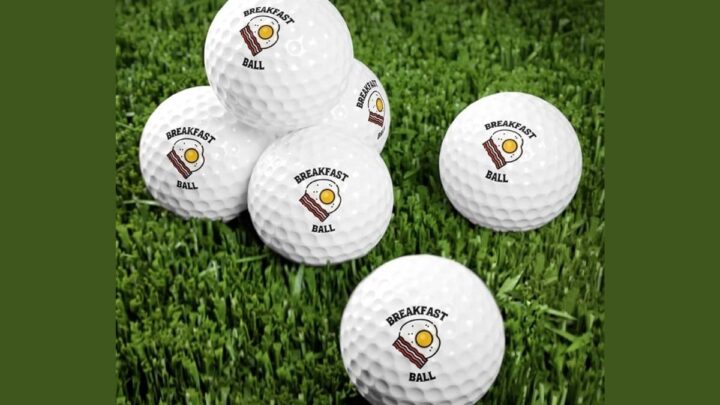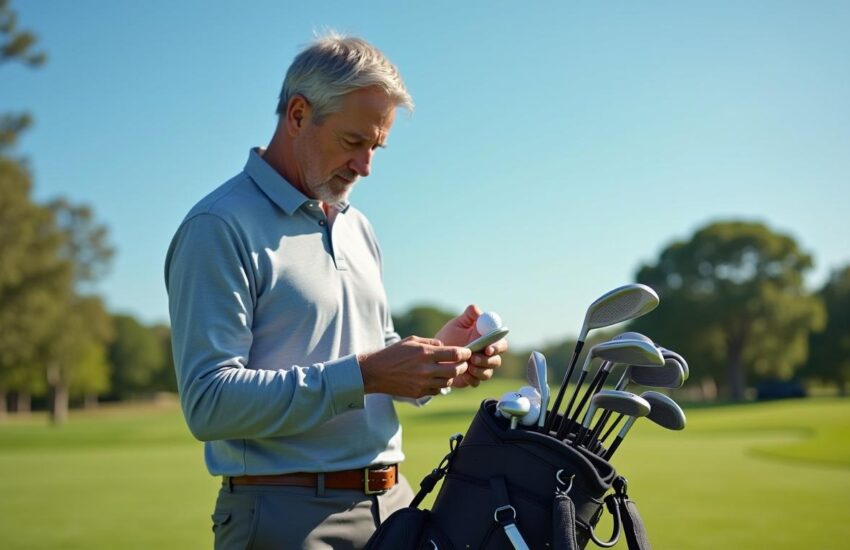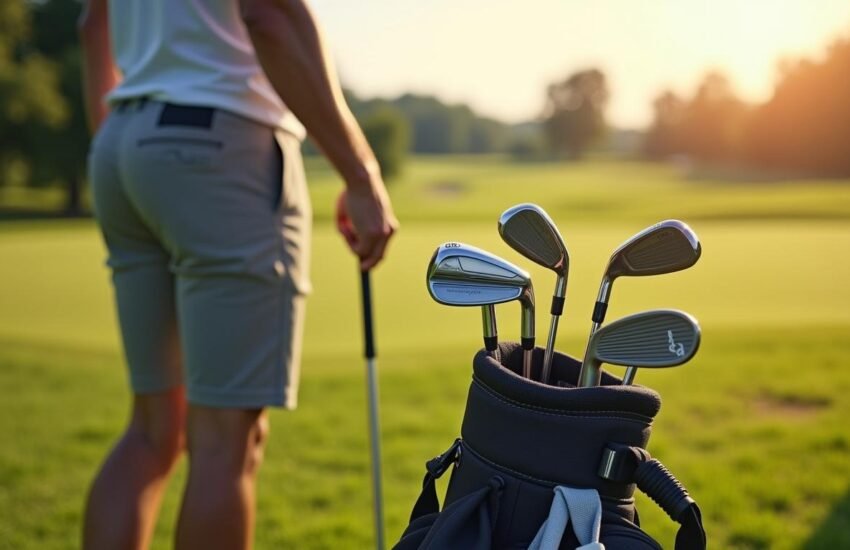What is a Breakfast Ball in Golf?
Half of all golfers take advantage of a breakfast ball in golf, making it one of the most widely accepted unofficial traditions in the sport. This informal practice essentially allows players to replay their first tee shot without penalty, particularly when they haven’t had time to warm up before their round.

While breakfast balls(not that McDonald’s burrito on the way) golf tradition isn’t part of the official rulebook, it has become a beloved aspect of casual play. In golf, what is a breakfast ball has a fascinating origin story, tied to a locker room attendant named John A. Mulligan, who first requested a replay of his bad shot. Today, this practice serves as a fun loophole that makes the game more enjoyable for casual players, though it remains restricted in competitive settings.
This guide explores everything players need to know about breakfast balls, from their history and proper usage to essential etiquette guidelines for different playing situations.
What is a Breakfast Ball in Golf?
A breakfast ball represents a specific type of mulligan taken on the first tee, allowing golfers to replay their opening shot without penalty. Specifically, this informal practice gives players a second chance if their initial drive goes astray, making the ball from the second attempt the one in play for the remainder of the hole.
Definition and common usage
In golf, what is a breakfast ball extends beyond a simple do-over. This courtesy typically applies exclusively to the first tee shot of the day. Furthermore, the practice has gained such popularity that approximately half of recreational golfers incorporate breakfast balls into their casual rounds. Players announce their intention to take a breakfast ball after an unsatisfactory first shot, subsequently pulling another ball from their pocket for a fresh attempt.
Why it’s called a breakfast ball
The term “breakfast ball” stems from its association with early morning tee times. Additionally, the name reflects the common scenario where golfers arrive at the course without adequate warm-up time, often rushing from breakfast to the first tee. The tradition traces its roots to John A. Mulligan, a locker room attendant at Essex Falls Country Club in New Jersey, who first requested a replay due to lack of preparation time before his round.
The breakfast ball concept has consequently evolved to accommodate various playing situations. Similarly to how morning rounds might warrant a breakfast ball, some groups extend this courtesy to other times of day – a practice sometimes called a “lunch ball”. This flexibility in terminology demonstrates how the breakfast ball tradition adapts to different playing scenarios while maintaining its core purpose of offering golfers a fresh start.
The practice serves as an unofficial remedy for those early morning rounds when players haven’t had time to visit the driving range or properly warm up their swing. This accommodation makes the game more enjoyable for casual players, specifically during those dawn patrol rounds when the first swing might feel more like a wake-up call than a golf shot.

The History Behind Golf’s Breakfast Ball Tradition
The fascinating story behind what is a breakfast ball in golf traces back to the early 20th century, intertwined with the broader history of mulligans. Two prominent figures emerge in the origin story, each contributing to the tradition that shapes breakfast balls golf culture today.
Origins of the practice
The earliest documented account of what is a breakfast ball in golf stems from David Bernard Mulligan, a Canadian hotelier who frequented St. Lambert Country Club in Montreal during the 1920s. One morning, after hitting a poor drive off the first tee, Mulligan spontaneously placed down another ball and took what he called a “correction shot”. His playing partners, amused by this unconventional move, allowed the practice to continue.
Moreover, a parallel story features John A. “Buddy” Mulligan, a locker room attendant at Essex Falls Country Club in New Jersey. His contribution to breakfast balls golf history occurred in the 1930s when he requested a second shot, arguing that his work duties prevented him from warming up like other players. This practical reasoning resonated with his playing partners, leading to widespread adoption of the practice.
Evolution in modern golf
Indeed, by the 1940s, the term “mulligan” had become firmly established in American golf vernacular. The practice evolved into what is a breakfast ball in golf today, primarily associated with early morning rounds when players haven’t had time to warm up properly.
The tradition gained significant momentum through the 1950s as clubs and resorts embraced lenient re-hit policies to attract patrons. Nonetheless, the practice remained strictly unofficial – never gaining recognition in the formal Rules of Golf.
In contemporary golf culture, the breakfast ball concept has expanded beyond its original morning context. Some players now refer to similar courtesies as “lunch balls” when taken later in the day. The practice maintains its primary purpose: offering golfers a fresh start when they haven’t had adequate preparation time.
The tradition’s endurance speaks to golf’s unique ability to balance competitive integrity with recreational enjoyment. Although tournament play strictly prohibits such practices, the breakfast ball remains a cherished part of casual rounds, embodying golf’s spirit of camaraderie and fair play.
When to Take a Breakfast Ball
Taking a breakfast ball requires understanding specific circumstances where this unofficial practice fits naturally into the game. Primarily, what is a breakfast ball in golf depends on timing, preparation, and playing conditions.
Early morning rounds
Dawn patrol golfers often face unique challenges that make breakfast balls golf particularly relevant. Under these circumstances, players might jump directly from their car to the first tee, with barely enough time to stretch. The early morning fog and stiff muscles can make that first swing feel particularly awkward, accordingly making the breakfast ball a welcome tradition for these sunrise rounds.
No warm-up situations
The absence of practice facilities presents another common scenario for what is a breakfast ball in golf. Many courses lack driving ranges or adequate warm-up areas. In fact, approximately half of all players utilize a breakfast ball when they haven’t had time to prepare properly. This practice helps golfers:
- Avoid starting with a penalty stroke
- Get properly warmed up for the round
- Maintain a positive mental outlook
- Keep pace of play moving smoothly
Course familiarity factors
First-time visitors to an unfamiliar course face additional challenges that might warrant a breakfast ball. Given that course layouts and starting holes vary significantly, players need time to adjust to new surroundings. The practice becomes especially relevant when dealing with challenging opening holes or unusual course features.
A breakfast ball remains strictly prohibited in tournament play. Nevertheless, for casual rounds, this tradition serves a practical purpose. Players should note that taking a breakfast ball means committing to play the second shot, regardless of outcome. Some groups even implement specific rules where the second attempt must be played, creating an interesting strategic element to the decision.
The timing of a breakfast ball matters significantly. This courtesy applies exclusively to the first tee shot of the day, regardless of when the round begins. Notwithstanding its name, a breakfast ball can be taken at any time of day, provided it’s the player’s first shot. However, proper etiquette dictates consulting with playing partners beforehand and maintaining a reasonable pace of play.

Breakfast Ball Etiquette: Do’s and Don’ts
Proper etiquette remains crucial when considering what is a breakfast ball in golf, even though this tradition operates outside official rules. First and foremost, players should understand that breakfast balls golf culture emphasizes courtesy and communication with fellow players.
Asking your playing partners
Primarily, golfers must request permission from their playing group before taking a breakfast ball . This courtesy extends beyond mere formality – it establishes mutual understanding and respect among players. Above all, remember that while 50% of players accept this practice, others might prefer strict adherence to official rules .
Consider these key etiquette points when requesting a breakfast ball:
- Discuss breakfast ball preferences before the round begins
- Accept your partners’ decision gracefully if they decline
- Maintain consistent rules throughout the group
- Keep pace of play in mind when deciding
Proper announcement protocol
In this case, what is a breakfast ball in golf requires clear communication. Players should declare their intention to take a breakfast ball immediately after their first shot, rather than waiting to see where it lands . Therefore, the proper sequence involves:
- Hit the initial tee shot
- Promptly announce the intention for a breakfast ball
- Place the second ball on the tee
- Play the second shot as the ball in play
Unless playing in tournaments, breakfast balls golf tradition allows for flexibility in social rounds . Still, players should avoid excessive delays or multiple attempts beyond the second shot. The practice aims to enhance enjoyment without disrupting the flow of play .
Some groups establish clear guidelines where the second shot must be played regardless of outcome, creating an interesting strategic element to the decision . This protocol ensures fairness and prevents selective application of the practice. Ultimately, breakfast ball etiquette centers on maintaining the spirit of the game while accommodating players who might need that early-round adjustment period.
Casual vs Competitive Play Rules
The rules governing what is a breakfast ball in golf vary dramatically between competitive and casual settings. Understanding these distinctions helps players navigate different playing scenarios appropriately.
Tournament restrictions
Primarily, the official Rules of Golf take a firm stance on breakfast balls golf practices in competitive settings. Under no circumstances can players take a breakfast ball or use a mulligan in an official competition. This restriction applies to:
- Tournament rounds
- Handicap-counting games
- Official club competitions
- Qualifying events
The rules remain unambiguous – any attempt to take what is a breakfast ball in golf during competitive play could result in disqualification. Typically, tournament organizers maintain strict oversight to ensure compliance with these regulations.
Social round flexibility
Alternatively, casual rounds offer considerably more latitude regarding breakfast balls golf traditions. Social games generally permit this practice, provided it doesn’t interfere with the overall flow of play. In fact, many courses have embraced this tradition as an unofficial policy, recognizing its role in enhancing player enjoyment.
When playing casually, what is a breakfast ball in golf becomes more flexible. Players can utilize this option without affecting their handicap index, as long as they follow proper protocols. Occasionally, some facilities even incorporate breakfast balls into their local policies, acknowledging the practice’s popularity among recreational golfers.
The key considerations for casual rounds include:
- Maintaining reasonable pace of play
- Obtaining group consensus beforehand
- Limiting usage to the first tee
- Ensuring fair application among all players
Namely, social rounds allow for creative interpretations of what is a breakfast ball in golf. Some groups extend this concept to include “lunch balls” later in the day. Including these variations adds an element of fun to casual play while preserving the game’s fundamental integrity.
Ultimately, the distinction between competitive and casual play remains clear. Tournament golf demands strict adherence to official rules, whereas friendly rounds permit greater flexibility. This balanced approach allows the sport to maintain its competitive integrity while accommodating recreational players’ needs.
The practice fits naturally into golf’s social fabric, provided players understand and respect the appropriate context for its use. Generally, as long as all participants agree and pace of play remains steady, breakfast balls can enhance the casual golf experience without compromising the sport’s core values. The extra time soon forgotten but that birdie, par or eagle they got won’t.
What is a Breakfast Ball in Golf Frequently Asked Questions
What is a breakfast ball in golf?
\A breakfast ball is an informal practice that allows golfers to replay their first tee shot of the day without penalty, typically when they haven’t had time to warm up before their round. It’s a courtesy extended to players, especially during early morning rounds.
When is it appropriate to take a breakfast ball?
A breakfast ball is generally taken on the first tee only, particularly when players haven’t had the opportunity to visit the driving range or properly warm up their swing. It’s most common during early morning rounds or when players go directly from their car to the first tee.
Is a breakfast ball allowed in competitive play?
No, breakfast balls are not permitted in competitive golf or official tournaments. They are strictly for casual rounds and should never be used when playing for an official handicap or in any form of organized competition.
What’s the proper etiquette for taking a breakfast ball?
Before taking a breakfast ball, it’s important to discuss and agree upon the practice with your playing partners. You should announce your intention to take a breakfast ball immediately after your first shot, rather than waiting to see where it lands.
Does taking a breakfast ball affect your score?
In casual play, how a breakfast ball affects your score depends on the agreement within your group. Some players choose to count only the second shot, while others play both balls and take the better result. However, for accurate score-keeping and handicap purposes, all strokes, including breakfast balls, should be counted.


